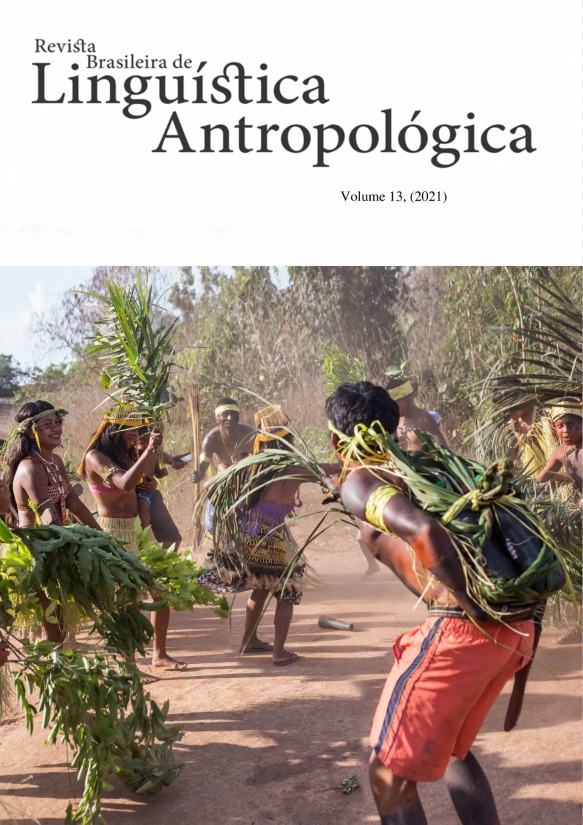The Sound Structure of Koreguaje: segments, supra-segments and proto-segments associated with nasal harmony in the Koreguaje language (Western Tukano)
segmentos, supra-segmentos y proto-segmentos asociados a la armonía nasal en la lengua koreguaje (tukano occidental)
DOI:
https://doi.org/10.26512/rbla.v13i01.40360Keywords:
Koreguaje, Segments, Supra-segments, Proto-segments, Nasality.Abstract
The Koreguaje language, belonging to the subfamily of the Western Tukana languages, is spoken in southwestern Colombia by about 2.500 people. An important characteristic of its sound structure is nasality, which we treat in this work at a suprasegmental level. For the description of the process of expansion of nasality within morphemes and morpho-phonemes, we adopt the theoretical framework of lexical phonology. These processes are carried out from underlying representations, supported by proto-phonemic studies, of the minimum significant units of the language to derive their phonetic structures. Through exemplifications, we try to demonstrate the validity of this theoretical proposal.
Downloads
References
Barnes, Janet, Wheeler, Alva y Wheeler, Margaret. 1992. En “Estudios Comparativos: Proto-Tukano”. Editorial Alberto Lleras Camargo. Bogotá. pp. 17-34.
Chacon, Thiago. 2014. A Revised Proposal of Proto-Tukanoan Consonants and Tukanoan Family Classification. International Journal of American Linguistics. 80: 275-322.
Chomsky, Noam y Morris Halle. 1968. “The Sound Pattern of English”, New York: Harper and Row.
Dupont, Carlos. 1988. “Armonía Nasal en la Lengua Koreguaje (Tukano Occidental), en Cuadernos de Lingüística Hispánica, año 2, N. 1: 105-125. Tunja. Universidad Pedagógica y Tecnológica de Colombia
Kaye, Jonathan. 1970. The Desano Verb: Problems in Semantics, Syntax and Phonology. PhD. dissertation, Columbia University.
Marin, Pedro. 2017. “Lenguas en Contacto: Análisis de Neologismos y Préstamos Lingüísticos en la Lengua Koreguaje-Cultura Tukano Occidental”. Estudios Latinoamericanos. (6,7). 63-72. https://revistas.udenar.edu.co/index.php/rceilat/article/view/3239
Mora, Luis Emilio. 1992. “La Dominancia Nasal en la Variedad Tama” en Forma y Función. No. 6. Abril. Universidad Nacional de Colombia. Departamento de Lingüística. 91-102. Bogotá.
Mora, Luis Emilio. 2019. “Reconocimiento del Pueblo Tama: Descripción fonológica de su variante lingüística”. Editorial Universidad del Valle. Cali, Colombia.
Muller, Carolyn, Dorothy Cook y Frances Gralow. “Fonología del Coreguaje” en Sistemas Fonológicos de Idiomas Colombianos. Tomo V. 1984: 62-79. Instituto Lingüístico de Verano. Bogotá.
Rodríguez, Sandra. 2000. “Estudios sobre la Lengua Koreguaje” en “Lenguas Indígenas de Colombia: una visión descriptiva”. Yerbabuena, Instituto Caro y Cuervo.
Vickers, William. 1989. “Los Sionas y Secoyas. Su Adaptación al Ambiente Amazónico” Colección 500 Años No. 9 Ed. ABYA-YALA. Ecuador.
Downloads
Published
How to Cite
Issue
Section
License
Copyright (c) 2021 Revista Brasileira de Linguística Antropológica

This work is licensed under a Creative Commons Attribution 4.0 International License.
Authors who publish in RBLA agree to the following terms:
a) Authors maintain the copyright and grant the journal the right of first publication, and the work is simultaneously licensed under the Creative Commons Attribution License, which allows the sharing of the work with recognition of the authorship of the work and initial publication in this journal.
b) Authors are authorized to assume additional contracts separately, for non-exclusive distribution of the version of the work published in this journal (eg, publish in an institutional repository or as a book chapter), with recognition of authorship and initial publication in this journal.
c) Authors are allowed and encouraged to publish their work online (eg, in institutional repositories or on their personal page) at any point before or during the editorial process, as this can generate productive changes, as well as increase impact and citation of the published work.







